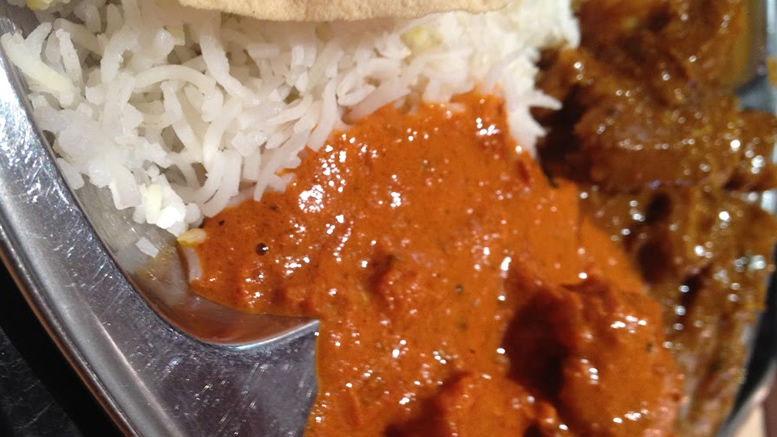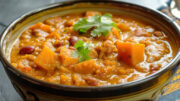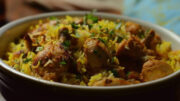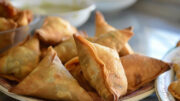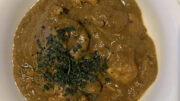India’s people and culture are vast and varied, with influences from Hindu, Jain, Buddhist, Sikh, Muslim, Zoroastrian, and Jewish backgrounds, each with its own eating prohibitions and sacred traditions. Despite this diversity, one common thread unites Indian cuisine: spice, with each region boasting its own unique flavors and cooking techniques. From the spicy curries of the north to the coconut-infused dishes of the south, Indian cuisine is a celebration of diversity and complexity.
Spices are a distinctive feature of Indian cooking, infusing dishes with an array of flavors and aromas. A typical curry mixture may contain fragrant powdered spices such as cardamom, cinnamon, cloves, cumin, nutmeg, and turmeric.
The term “curry” itself is derived from the Tamil word “kari,” which refers to both a leaf used in cooking and a specific cooking method prevalent in South India.
In the northern regions of India, particularly Punjab, hearty dishes like butter chicken, dal makhani, and tandoori meats reign supreme. These dishes are often cooked in a traditional clay oven known as a tandoor, imparting a distinct smoky flavor.
Moving southwards, the cuisine becomes lighter and more coconut-centric, with dishes like dosas, idlis, and sambar dominating the culinary scene. Coconut milk and oil are commonly used in cooking, adding richness and depth to dishes.
In the western state of Gujarat, vegetarianism is embraced wholeheartedly, giving rise to a vibrant array of vegetarian delicacies. Dishes like dhokla, khandvi, and undhiyu showcase the region’s love for spices and intricate flavor combinations.
Eastern India, with its proximity to the Bay of Bengal, boasts an abundance of seafood dishes. Bengali cuisine, in particular, is renowned for its fish curries, such as maacher jhol and doi maach, which are often paired with fragrant rice.
India’s street food culture is another integral aspect of its culinary heritage. From the spicy chaats of Mumbai to the mouthwatering kebabs of Lucknow, street vendors across the country offer a tantalizing array of snacks and treats that cater to every palate.
The Indian meal is made up of a main course, a side dish, and a central bread such as naan or basmati rice. The side dish can be made of chutneys, highly seasoned vegetables, and fresh fruits. If the main course includes meat, it is likely to feature lamb, goat, or seafood, as beef is generally avoided, and pork is consumed sparingly due to cultural and religious beliefs. Hindus, in particular, adhere strictly to vegetarianism, contributing to the development of one of the world’s most vibrant vegetarian cuisines. Utilizing cereals, pulses (such as lentils, peas, and beans), and rice with creative flair, Indian chefs craft a diverse array of meatless dishes that delight the senses.
No discussion of Indian cuisine would be complete without mentioning the importance of sweets and desserts. From the syrupy indulgence of gulab jamun to the delicate flavors of rasgulla and jalebi, Indian sweets are a testament to the country’s love for all things sweet.
In addition to its rich culinary traditions, Indian cuisine also holds a deep spiritual significance. The concept of “prasad,” or food offered to the gods, is an integral part of Hindu rituals and ceremonies. Many Indian dishes are prepared and served with devotion and reverence, reflecting the spiritual connection between food and culture in India.

